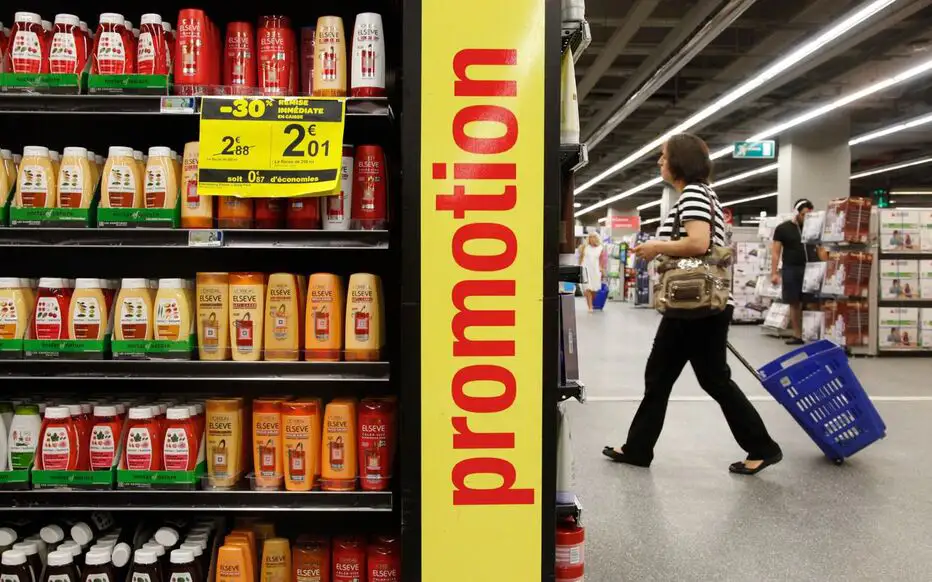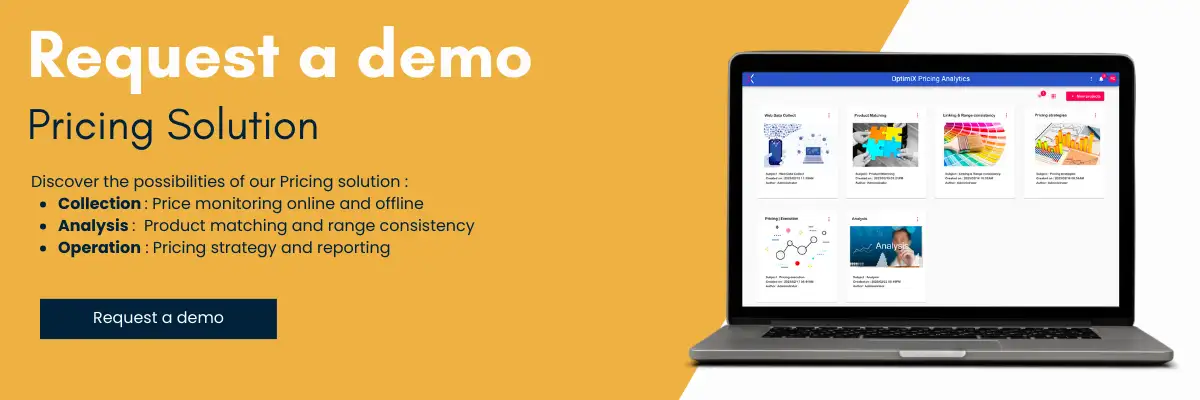Aggressive promotions on hygiene and cleaning products have long been commonplace in retailers’ commercial strategies. However, an end to these intensive promotional practices is now on the agenda.
This development raises crucial questions for consumers and professionals in the sector.
- How will market players have to adapt to this change?
- What will be the consequences for consumers and businesses?
This article examines the implications of this transition and offers strategies to address them: subscriptions, volume discounts and loyalty programs to attract and retain customers.
As of March 1, promotions on non-food products in supermarkets will be subject to strict restrictions, under the Descrozaille law which will soon come into force. All promotions above 34% will be prohibited, which means that large stores will have to revise their marketing and sales strategy. However, while waiting for this deadline, supermarkets are increasing their number of attractive offers to attract customers and maximize their sales.
Now is the time to take advantage of these offers before they disappear!
Strategies for adapting to the new reality
Faced with the end of aggressive promotions, businesses must adopt new strategies to thrive in this changing environment. Here are some recommendations for market players:
- Invest in Research and Development to improve product quality and innovation.
- Develop strategic partnerships with other brands and retailers to deliver greater value to customers.
- Leverage data and analytics to understand customer needs and preferences, and personalize the shopping experience.
- Implement effective pricing strategies to adapt to fluctuations in demand and competition.
- Create loyalty programs and repeat purchase incentives to strengthen customer relationships.
Add Your Heading Text Here
Brands Facing Change
A. Necessary adaptations in promotional strategies
Retail brands are facing a major challenge with the end of shock promotions on hygiene and cleaning products. They must review their promotional strategies to align with new regulations while continuing to attract customers and maintain profitability.
This involves rethinking promotion mechanisms, favoring more sustainable and responsible offers.
B. Focus on alternatives to shock promotions for hygiene and cleaning products
Brands can explore different alternatives to shock promotions to promote hygiene and cleaning products. This includes highlighting the quality, sustainability and environmental and social benefits of products.
Loyalty programs, bundled offers, discounts on multiple purchases and initiatives to raise consumer awareness of the importance of choosing responsible products are all avenues to explore.
Importance of communication to raise consumer awareness of change
The transition to the end of shock promotions requires effective communication with consumers. Retailers must explain the reasons behind this decision, highlight the benefits of new promotional approaches and encourage customers to adopt more thoughtful purchasing behaviors.
Transparency on business practices and highlighting the brand’s sustainable initiatives can strengthen consumer confidence and promote acceptance of change.

The Consequences for Consumers
A. Impacts on purchasing behavior and consumption habits:
The end of shock promotions on hygiene and cleaning products is likely to have an impact on consumer purchasing behavior. The latter could be led to reconsider their choices and opt for better quality and more durable products, rather than being influenced by aggressive promotional offers.
This could also lead to a change in consumption habits towards more responsible practices.
B. Importance of educating consumers on the benefits of durable and quality products:
With the end of shock promotions, it becomes essential to educate consumers on the benefits of high quality, environmentally friendly hygiene and cleaning products.
Retailers can play a crucial role by providing transparent information on products, highlighting their sustainable characteristics and raising customer awareness of the environmental and social issues associated with their consumption choices.
C. Reflection on the environmental and social impact of this transition:
The transition towards the end of shock promotions on hygiene and cleaning products offers the opportunity to reduce the environmental and social impact of consumption.
By encouraging consumers to opt for sustainable and ethical products, this transition can contribute to the preservation of natural resources, the reduction of waste and the improvement of working conditions in production chains.
This is an important step towards more responsible and environmentally friendly consumption.
A real need to equip ourselves with a price optimization solution
In this turbulent context, it is essential for retail brands to equip themselves with price optimization solutions. Indeed, faced with the disappearance of aggressive promotions, retailers must rethink their pricing strategy and adopt effective tools to help them set prices optimally.
Pricing optimization solutions enable retailers to make informed pricing decisions by analyzing data such as production costs, competition, profit margins, demand and customer preferences. With these tools, retailers can:
1. Analyze and anticipate market trends:
Pricing optimization solutions provide retailers with the ability to analyze historical and current data to identify trends and consumption patterns, enabling competitive and attractive pricing.
2. Adapt prices in real time:
Algorithms built into price optimization solutions allow retailers to quickly and automatically adjust prices based on fluctuations in demand, competition and production costs.
3. Customize pricing based on customer segments:
Price optimization tools offer the ability to define specific pricing strategies for targeted customer segments, based on their preferences, purchase history and price sensitivity.
4. Improve profitability:
Pricing optimization solutions help retailers maximize profits by identifying optimal prices for each product, taking into account costs, profit margins and competition.Pricing optimization solutions help retailers maximize profits by identifying optimal prices for each product, taking into account costs, profit margins and competition.
5. Make data-driven decisions:
Pricing optimization tools provide detailed insights and in-depth analytics, enabling retailers to make informed decisions and justify their pricing choices.
In short, the end of shock promotions on hygiene and cleaning products is forcing retail brands to rethink their pricing strategy and equip themselves with price optimization tools.
These solutions enable retailers to set competitive prices, quickly adapt pricing based on market trends, personalize pricing based on customer segments, and improve profitability. By investing in price optimization solutions, retail brands will be better equipped to adapt to this changing context and maintain their competitiveness in the market.
Conclusion
The end of aggressive promotions in the DPH (Drugstore, Perfumery, Hygiene) sector represents a decisive turning point in companies’ marketing strategies. Large market players will need to reassess and adapt their approaches in response to this regulatory change.
The outcome will depend on how consumers react to these changes and the ability of businesses to adapt to maintain their competitiveness in the market.
Companies will have to innovate, differentiate themselves and offer added value to their customers to retain them and attract new consumers. The coming period will be decisive in assessing the real impact of this regulation on the hygiene and beauty industry.
Businesses will need to closely monitor evolving consumer behaviors and preferences, as well as competitive reactions.
Ultimately, the end of shock promotions in the DPH sector offers a unique opportunity to rethink marketing and commercial strategies, to question established models and to explore new ways to attract and satisfy consumers.


